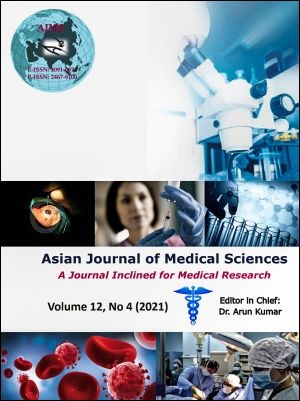Risk identification of a hospital laboratory pre-analytics through failure mode and effect analysis
Keywords:
FMEA, FTA, FRACAS, Failure modes, Risk analysis, Pre analyticalAbstract
Background: Implementing an active system to identify, monitor and manage risk from laboratory errors can enhance patient safety and quality of care.
Aims and Objectives: Failure Mode and Effect Analysis (FMEA) technique allows evaluating and measuring the hazards of a process malfunction, to decide where to execute improvement actions, and to measure the outcome of those actions. The aim of this study was to assess pre analytical phase of laboratory testing, mitigate risk and thereby increase patient safety.
Materials and Methods: Steps followed in the study were: planning the study, selecting team members, analysis of the processes, risk analysis, and developing a risk reduction protocol by incorporating corrective actions. A Fault Tree Analysis diagram was used to plot the cascade of faults leading to the pre analytical errors. Risk Priority Number (RPN) was assigned. A minimum cut- off 40 RPN was considered for interventions and highest RPN errors were prioritized with corrective actions. Post intervention RPN score was calculated.
Results: Eight failure modes had the highest RPN. Corrective actions were prioritized against these errors. RPN scores of test ordering error, sample collection error, transport errors, error in patient identification, site selection, urine samples not received, sample accessioning and sample processing errors decreased, post intervention.
Conclusion: With thorough planning, we can use FMEA as a common standard to analyze risk in pre analytical phase of laboratory testing.
Downloads
Downloads
Published
How to Cite
Issue
Section
License
Authors who publish with this journal agree to the following terms:
- The journal holds copyright and publishes the work under a Creative Commons CC-BY-NC license that permits use, distribution and reprduction in any medium, provided the original work is properly cited and is not used for commercial purposes. The journal should be recognised as the original publisher of this work.
- Authors are able to enter into separate, additional contractual arrangements for the non-exclusive distribution of the journal's published version of the work (e.g., post it to an institutional repository or publish it in a book), with an acknowledgement of its initial publication in this journal.
- Authors are permitted and encouraged to post their work online (e.g., in institutional repositories or on their website) prior to and during the submission process, as it can lead to productive exchanges, as well as earlier and greater citation of published work (See The Effect of Open Access).




